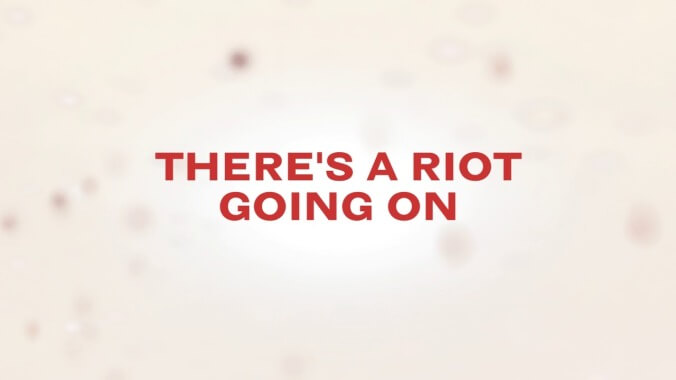There’s A Riot Going On, so Yo La Tengo recommends staying inside

On 1971’s There’s A Riot Goin’ On, Sly And The Family Stone filtered the creeping hangover of the ’60s into a murky, slurring monument of fugue-state funk. It was an album that reflected the twilight mood of its time: Woodstock optimism ossifying into Altamont dread, “free love” fading into porno reels inside 42nd St. grindhouses, stoned grooves edging into junkie paranoia (and dovetailing with Sly Stone’s own descent into addiction). In its muffled cries, There’s A Riot offered a bitter, brooding response to a world that seemed to be rapidly falling apart, one that recommended just barring the windows and getting good and numb.
In nicking the title for its newest record, released amid a similarly epochal American bummer, Yo La Tengo posits its own There’s A Riot Going On as a similar Album For These Times. Though the long-running indie band has hesitated to say as much in interviews, the press materials refer to the free-floating “confusion and anxiety” in the air that inspired it, suggesting it’s an “expression of freedom and sanity” that similarly captures a nation teetering on the edge. But this isn’t a collection of protest anthems, nor is it even the kind of alarming, seismic stylistic shift Sly Stone pulled to announce his disillusionment with the soul-dream he’d started. It finds Yo La Tengo working in an especially hushed, candlelit mood, not too far off from the dusky lullabies of 2000’s And Then Nothing Turned Itself Inside Out. The album is not a reflection of anger so much as a meditative retreat from it—less agitprop than aromatherapy session.
Which is good! A few storming guitar squalls from Painful and Electr-O-Pura aside, Yo La Tengo has never been particularly aggressive, and certainly no one expects the mild-mannered Ira Kaplan or Georgia Hubley to start murmuring calls to march in the streets. Besides, we could all use some nice, chill music to draw the blinds and escape into right now. That said, the title and attendant marketing have forced a context of historical importance onto Riot that it can’t quite live up to; anyone expecting a bold, era-defining statement here will ultimately be let down by its softly spoken rumination on fear, hurt, and uncertainty, which could be applied equally to dramas political or romantic. Still, as with its namesake, the unease is there, palpable in the smaller sonic spaces, sensed more than shouted. We could all use more nuance these days, too.
The album’s impressive layering can be attributed to the band piecing Riot together entirely in the studio, rather than composing and rehearsing songs beforehand—cobbling it together from scraps of leftover recordings and adding parts one at a time, sometimes months in between. It’s similar to how the group has worked on film music, Kaplan has said, and indeed, there’s a real “imaginary soundtrack” feel to much of Riot, with long stretches of pure tone interspersed between the pop songs. (In “Shortwave,” a beat-less, glassily pretty drone that sits somewhere between Julianna Barwick and Stars Of The Lid, it even yields arguably Yo La Tengo’s first purely ambient track.) There’s also plenty of evidence it was mostly written on a computer: Shambling, snapped-to-grid drum loops, watery fluctuations, choral swells, field sound samples, and other digital tricks abound. Songs don’t end so much as dissolve, lingering just a hair longer than expected, which gives the whole thing a slightly haunted feel. Still, it hangs together organically, united by its sustained, melancholically dreamy mood.
